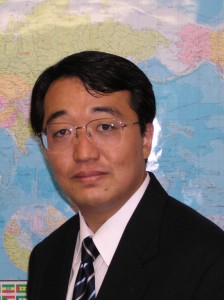緊張と統合:内村鑑三におけるキリスト教と日本の精神
このシリーズでは、私が1994年に執筆した統一神学大学院(Unification Theological Seminary)の神学課程修士論文(Divinity Thesis)を日英二か国語で掲載している。
1.土着化の問題の続き
五番目のタイプは、「文化の改造者としてのキリスト」であり、それはまた回心主義者(conversionists)と呼ばれる。この顕著な例はアウグスチヌス、カルビン、ウェスレーである。彼らの見方によれば、文化は腐敗しているが回心可能であり、使い道があり、おそらくは神の恩寵と力によって贖い得るとさえされている。文化は堕落しているが、その本質において悪ではない。歴史は神の業が繰り広げられる舞台であり、人類と文化の回心と変革は共に可能である。もちろんそれは神の最終的な勝利によって起こるものであるが。
ニーバーの類型に基づいて、チャールズ・H・クラフトはこの問題に関する本質的な視点を、彼の著書 Christianity in Culture(文化におけるキリスト教)の中で展開している。彼は神の文化に対する関係に対する理解のうち、最初にあげた二つの極端なタイプ(「文化に対するキリスト」と「文化のキリスト」)の間違いは、「彼らが『キリスト教的である』ということを、主として文化の形式の中に見たのであって、これらの形式が果たしている機能と、それらに携わっている人々の動機の中に見なかった」ことにあると主張する。クラフトは、文化が『キリスト教的』であるかどうかの基準は、形式よりも機能と動機に対して適応されるのがより適切であると主張する。したがって、「もし『キリスト教であること』が存在するとすれば、それは機能や効用を特徴づけるものであって、文化的形式そのものではないのである。」彼は文化的構造を次のようなものと見ている。
基本的には媒介体あるいは環境であって、本質的に中立であるが、人間の罪深さの影響により堕落させられ、ゆがんでいる。文化それ自体は、神もしくは人類の敵でも味方でもない。むしろそれは人間、神、サタンといった人格的存在によって使われるために存在しているものである。
彼は、神は単一の教会の政体を要求するのではなくて、神に栄光を帰すという一つの機能をもった、さまざまな文化的形態の政体を求めておられるのであると結論する。
我々が少なくとも現時点において認識しなくてはならないことは、超文化的な真理とは何か超越的で定義不可能なものであるということである。我々はそれについて、何かを知ることができるであろう。しかし我々の理解は決して絶対的でも無謬でもない。なぜなら、それは部分的な理解に過ぎないからである。文化的な制約を受けている我々の視点によっては、啓示された真理は「鏡に映して見るようにおぼろげに」(コリントI.13:12)しか見ることができないのである。この事は、内村のメッセージと無教会運動の原理を理解する上において決定的な意味をもっている。
I. Problem of Indigenization (Cont.)
The fifth type is Christ the transformer of culture, which is also labeled as conversionist. Outstanding examples are Augustine, Calvin, and Wesley. In this view, culture is seen as corrupted but convertible, usable, perhaps even redeemable by God’s grace and power. Culture is perverted but not evil in essence. History is the arena in which God’s works are displayed and the conversion and transformation of humanity and culture are both possible, issuing, of course, in the final victory of God.(12)
Based on Niebuhr’s typology, Charles H. Kraft develops an essential perspective on this issue in his Christianity in Culture. He maintains that the fault of the first two extreme types of understanding of God’s relation to culture (Christ against culture and Christ of culture) is that they interpret Christianness of culture primarily in terms of the forms of culture, rather than in terms of the function to which these forms are put and the motivation of those who employ them.”(13) He advocates that “Christianness” as a measure of culture is more properly applied to function and motives than to forms. Hence, “If there is Christianness, though, is characterizes the function and use, not the cultural form per se.”(14)He sees cultural structuring as:
basically a vehicle or milieu, neutral in essence, though warped by the pervasive influence of human sinfulness. Culture is not in and of itself either an enemy or a friend to God or humans. It is, rather, something that is there to be used by personal beings such as humans, God, and Satan.(15)
He comes to a conclusion that God does not require a single form of church government, but the various cultural forms of government with a single function – to glorify God.(16)
What we must recognize at least this point is that the supracultural truth is something transcendent and undefinable. We may be able to know something, but our understanding of it can never be absolute or infallible, since it is only partial. Our culture-bound perspectives allow us to see even revealed truth only “like the dim image in a mirror” (I Cor. 13:12). This is crucial to understand the message of Uchimura and the principle of the Mukyokai movement.
(12)Niebuhr, Christ and Culture, pp.194-195.
(13)Kraft, p.108.
(14)Ibid., p.108.
(15)Ibid., p.114.
(16)Ibid., p.118.
